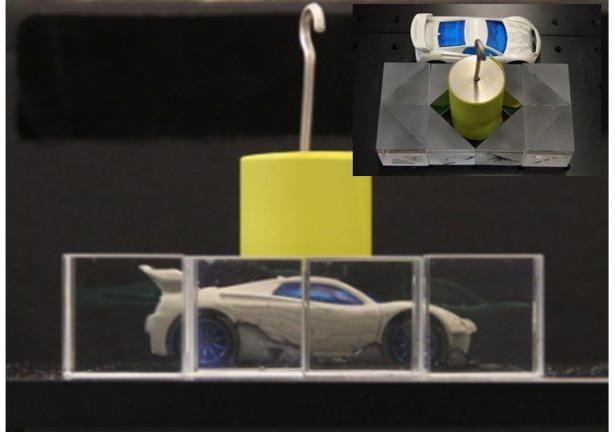Jun 16 2021
Through optical cloaking, objects can be concealed from plain sight or can be made invisible by directing light around any object positioned within the cloak.
 Cloaking device realized by standard optical components. Image Credit: Figure reproduced with permission from Scientific Reports 6, 38965 (2016) Copyright 2016 Springer Nature Limited.
Cloaking device realized by standard optical components. Image Credit: Figure reproduced with permission from Scientific Reports 6, 38965 (2016) Copyright 2016 Springer Nature Limited.
Although cloaking is popularly found in fictional books, like in the “Harry Potter” series, researchers in the last few years have realized that cloaks can shield objects from view by managing the flow of electromagnetic radiation around them.
Scientists from the Toyota Research Institute of North America looked at the latest progress of designing invisibility cloaks that work in natural, incoherent light and can be achieved using regular optical components. The study was part of ongoing research work over the last 20 years and has been published in the Journal of Applied Physics, by AIP Publishing.
Invisibility cloaks could have a wide range of applications in display and sensing devices used in surveillance, warfare, spacecraft, highly efficient solar cells and blind-spot removal in vehicles. The researchers investigated the blind spots found in vehicles, like the windshield pillars — the stanchions framing windshields.
We are always looking for ways to keep drivers and passengers safe while driving. We started exploring whether we could make the light go around the pillar so it appeared transparent.
Debasish Banerjee, Study Author, Toyota Research Institute of North America
Advancements in metamaterials, which are engineered complexes of dielectrics and metals used for exploiting electromagnetic waves, have opened up new possibilities to achieve optical cloaks around an object by allowing incoming light to bypass it.
For perfect optical cloaking, the entire scattering of electromagnetic waves should be around an object at all polarizations and all angles, and across a broad frequency range, regardless of the medium. Such optical cloaking has not been achieved yet.
But by streamlining the invisibility needs, researchers have accomplished innovative work with plasmonic cloaks, spherical transformation cloaks, mantle cloaks and carpet cloaks in the narrowband infrared, microwave and optical wavelengths in the last 20 years.
One of the real challenges is that we have to optimize optical elements around an object so that phase relationships are preserved.
Debasish Banerjee, Study Author, Toyota Research Institute of North America
Machine learning and artificial intelligence can help solve certain challenges encountered in optimization. Moreover, the necessary inverse design issue in the context of practical cloaking devices can be solved with algorithms.
These can serve as robust tools to predict and assess the optical responses of these detectors or devices without costly and time-consuming simulations, which may increase the possibility of smart invisibility that is adaptive to shapes, movements and the environment.
With the rapid development of both additive manufacturing capabilities and AI-aided design, flexible cloaks that work effectively at all incident angles with a wide field of view and a high cloaking ratio can potentially be achieved and produced at a large scale with excellent efficiency and cost-effectiveness.
Journal Reference:
Lee, K.-T., et al. (2021) Optical cloaking and invisibility: From fiction toward a technological reality. Journal of Applied Physics. doi.org/ 10.1063/5.0048846.